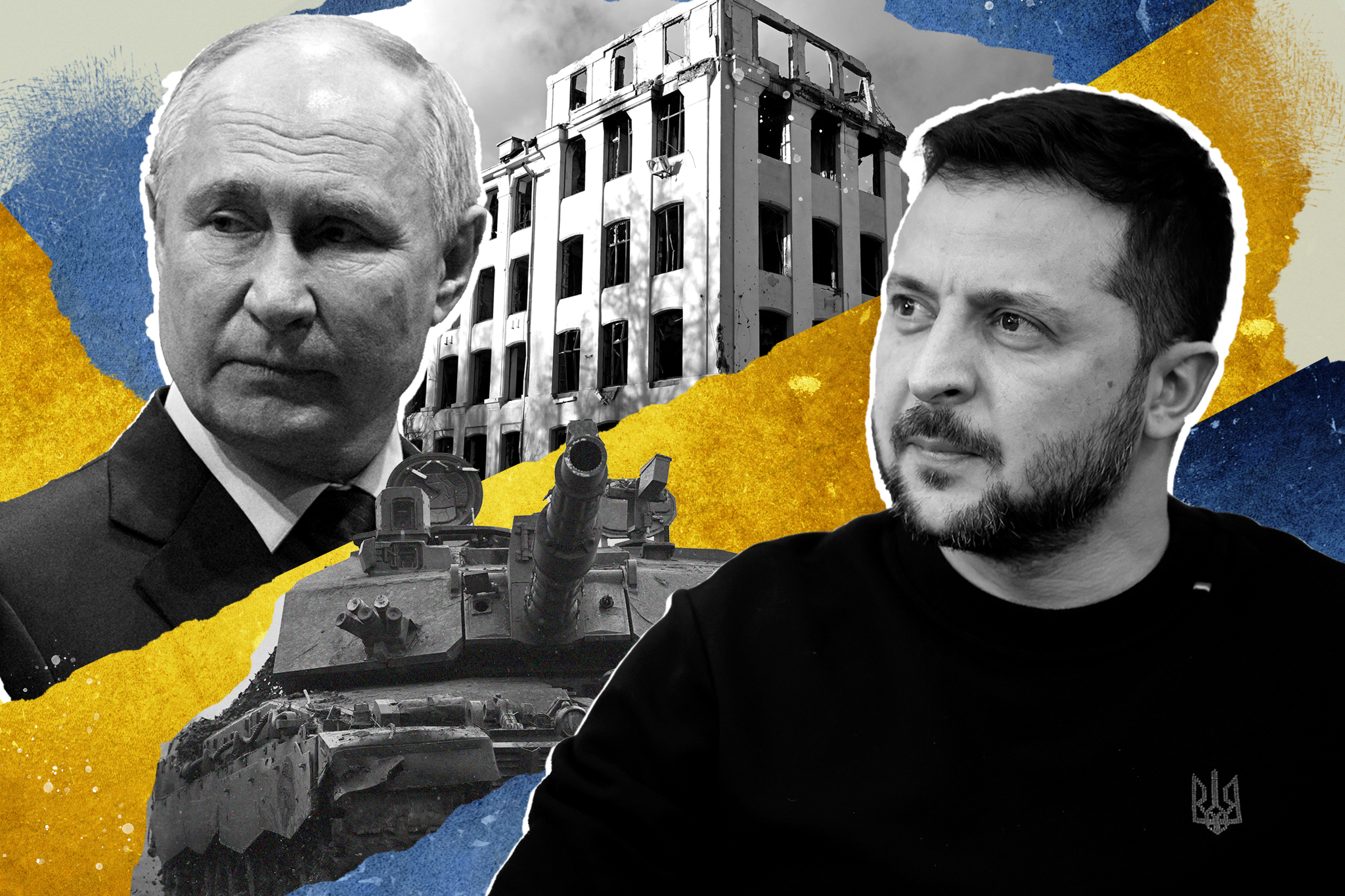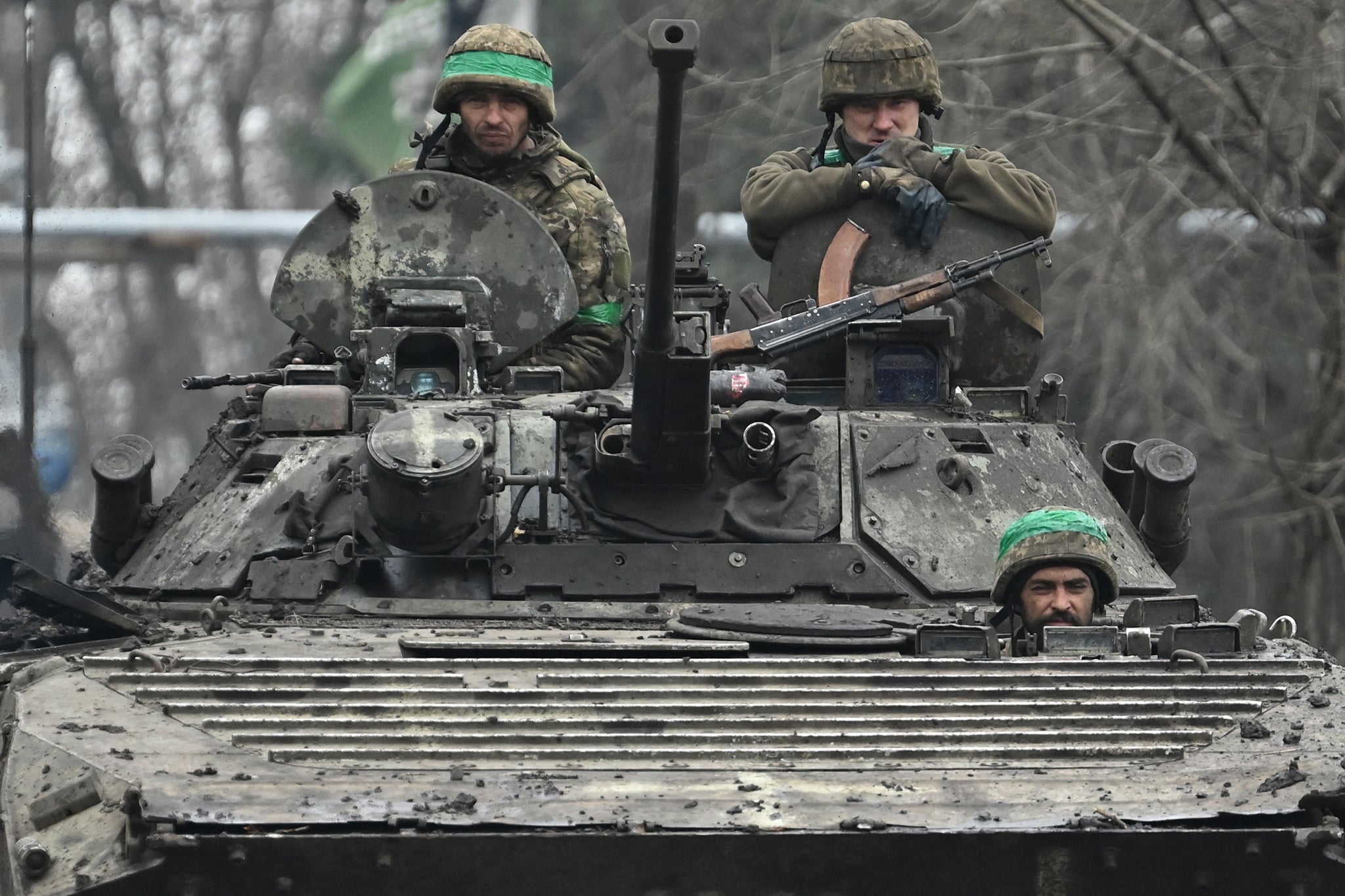Three big lessons from two years of war in Ukraine (that tell us what might happen next)
When Russia invaded Ukraine in the early hours of 24 February two years ago, nobody knew how it would play out. Here author and Russia expert Mark Galeotti sifts through the carnage of the bloody conflict for clues as to what will happen next

Two years of bloody war in Ukraine have seen more than half a million soldiers killed or wounded, more than six million Ukrainians flee the country, and yet a front line which has scarcely moved for a year now.
Looking ahead, there will be decisions to be made on everything from the next Western weapon systems to provide Ukraine, to whether Kyiv adopts a more defensive strategy, but there are three key lessons and indicators for the future that hint where the war could go next…
Listen closely to what Putin says – the clues are always there
For all his willingness to lie and misdirect, Vladimir Putin does tend to tell us what he wants. When he invaded, he seemed genuinely to have believed that he was in for a walk-over.
As reiterated in the surreal first half hour of his interview with Tucker Carlson earlier this month, where he treated the American conservative TV personality to his take on Russian-Ukrainian history since the ninth century, he does not truly believe they are two distinct countries.
Instead, he assumed the Ukrainians would, almost without a fight, accept the imposition of a new and more tractable government willing to keep Ukraine within Russia’s sphere of influence.
To a degree, this is still his avowed aim. However, there is also a certain nuance starting to creep into his rhetoric that we should pay attention to.
He still wants to keep Ukraine out of Nato, but there are hints from figures, both officials and think tankers, that he would be willing to see it join the EU.
If Russia can retain the territories it has occupied, then the indications are that, so long as it remains neutral, the rump Ukraine can be allowed a degree of independence.
Of course, this is neither acceptable under international law, nor to the Ukrainians. However, it does demonstrate that even Putin’s imperialist demands will be modulated by what he thinks he can get.
Putin goes into 2024 in a strong position. His forces have weathered last year’s Ukrainian counter-offensive and have more ammunition. He has hopes for the prospect of political change in the West, especially if Donald Trump wins the presidency.
However, we should not expect any genuine willingness to talk, let alone make concessions. As the coming year unfolds and if Ukraine holds the line and prepares its forces for renewed operations in 2025, as Western ammunition production begins to scale up and resolve is maintained, then we need to be alert to any signals that Putin is getting rattled.
If that happens, it may be a sign that negotiations are possible – but in the shorter term, it would likely spell escalation or some desperate gambit, as he tries to regain the initiative.
Manpower matters – but it is a problem, for both sides
Much of the debate in the West revolves around which weapons to send Ukraine, and past recriminations that the “right” ones were not sent in the “right” numbers at the “right” time.
Of course, the pace, scale and nature of military assistance matters, but the truth is that there is no magic weapon able to turn the tide of the war alone. When HIMARS and other long-range rocket and artillery systems were first provided, they were heralded as war-winners.
They certainly did allow the Ukrainians to strike Russian command posts and ammunition dumps with greater range and accuracy once they were introduced in July 2022, but in time the invaders adapted.
From modern Western tanks to the F-16 jets whose pilots are already in training, these all offer incremental improvements to Ukrainian military capabilities, but not a silver bullet.
This war has provided a stark and bloody reminder that manpower is still key. There is a reason why both sides keep their combat losses classified – with Kyiv not even telling its allies quite how many casualties it has suffered.
A larger number of Putin’s soldiers have been killed or injured – but Russia’s population is four times Ukraine’s and as a proportion of the population, the Ukrainians are taking heavier losses.

Boots on the ground is one military resource that the West will not provide. While Britain’s Operation Interflex has trained upwards of 30,000 Ukrainian soldiers, there is no serious constituency advocating sending troops to fight and risking a wider war with Russia.
The manpower issue is becoming increasingly difficult for both sides. Moscow’s claims that 1,000 to 1,500 Russians volunteer for the military every day look heavily inflated, yet before March’s presidential elections, Putin clearly does not want a repeat of the massively unpopular mobilisation of September-October 2022.
Unless he does draft more men, though, the chances of his forces being able to launch major and sustained offensive operations in 2024 are limited, so this will be a key indicator to watch.
The military’s request that another 450,000 to 500,000 soldiers be called up brought to a head tension between president Volodymyr Zelensky and his popular commander in chief General Valerii Zaluzhny. Ukraine is already spending more than a third of its GDP on defence, and the question is whether it can afford these extra soldiers.
Zelensky subsequently sacked Zaluzhny, and a new conscription law is still under discussion. The fear is that as conscription becomes increasingly draconian and extensive, this may, in the words of a European diplomat based in Kyiv, “begin to undermine Ukrainian morale, and make some kind of deal with Putin a little less unthinkable”.
Victory and defeat mean different things now
There is much often-empty talk of victory and defeat. At the start of the war, when Russian forces were advancing on Kyiv, it was relatively easy to define both: the very survival of Ukraine as an independent, sovereign nation was under direct threat. Two years on, though, thanks to the extraordinary defiance of the Ukrainian people, it is a lot harder to define either.
Is a Ukrainian victory nothing short of expelling every Russian soldier from every inch of occupied territory, including Crimea? Not only will that be a difficult task, but it would not necessarily end the war, simply move the front line to the national border.
Putin would still be free to regroup his forces for another attack while lobbing drones and missiles at Ukrainian cities and powerlines.
Does a Ukrainian defeat mean the subjugation of the nation? That is looking highly unlikely now that Russia’s military has taken such heavy losses. The worst case, according to both British and Ukrainian strategists, is that Russia could push to the Dnipro River that cuts through the country, occupying all of the east.
This would be terrible, not least for the Ukrainians trapped in Russian-held territory, but it would not extinguish the Ukrainian nation.
At present, Ukraine is formally committed to the maximalist notion of victory, but even in Kyiv there are quiet voices acknowledging that the country may come to face a terrible dilemma: continue the war indefinitely or accept the loss of some territory in the name of being able to move on, especially with Nato and EU membership.

As one official admitted, “we’re nowhere near this now, but we might one day have to decide that Ukrainian lives matter more than Ukrainian soil”.
This would not be easy. Zelensky has ruled out any concessions, and it would even run counter to the constitution, although there are ways of fudging this – such as by not formally recognising any Russian claim to the occupied territories.
Nonetheless, as there can be no meaningful strategy without a clear sense of an objective, it is clear that in this third year of war, we may see careful and discreet discussions intended to nail down quite what Kyiv and its Western partners believe is a meaningful and achievable success.
Dr Mark Galeotti is the author of ‘Putin’s Wars: From Chechnya to Ukraine’, now out in paperback






Join our commenting forum
Join thought-provoking conversations, follow other Independent readers and see their replies
Comments